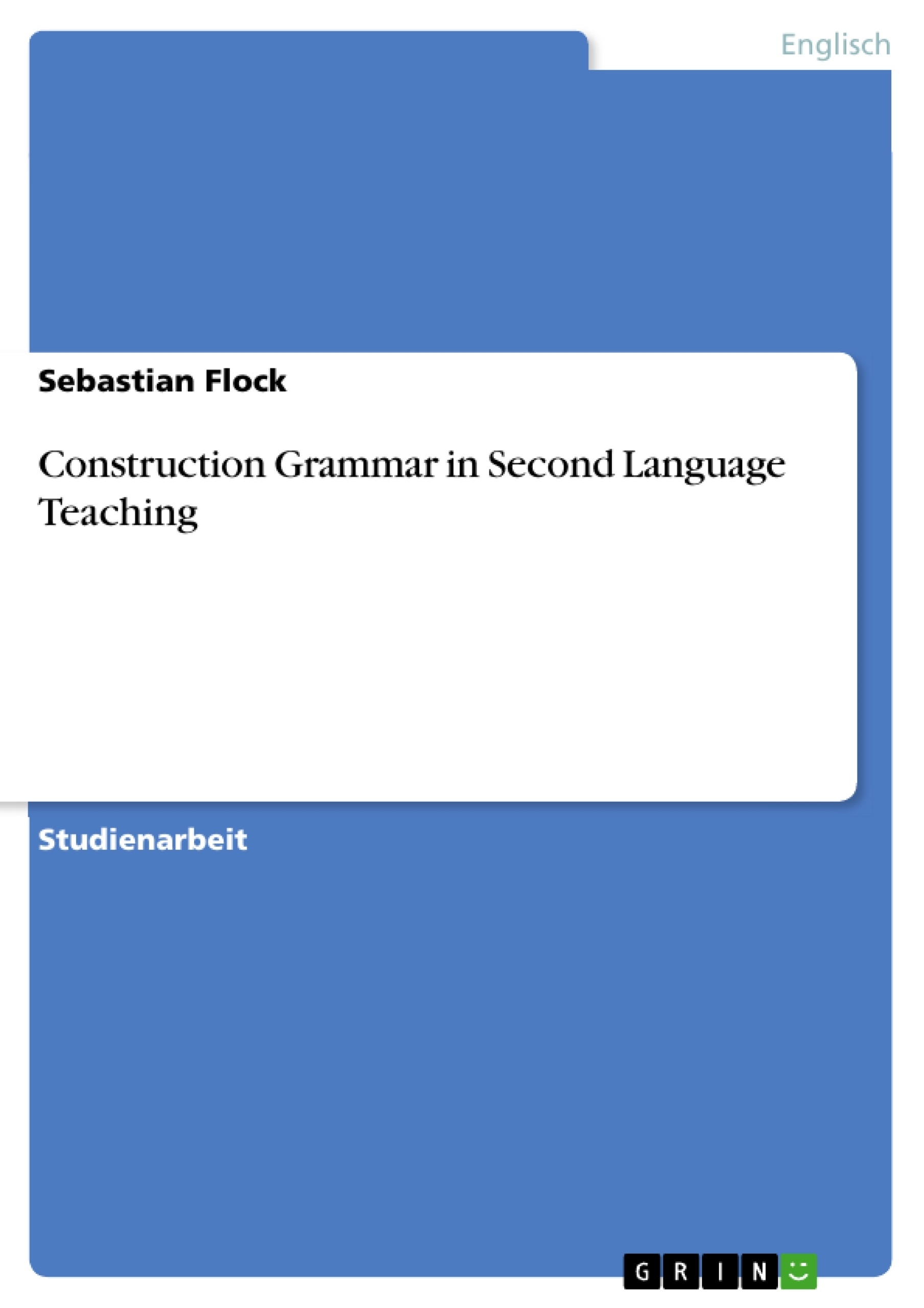For more than 20 years now, the concept of constructions has been playing a more and more important role in theories of language acquisition and language use. In the 1980s Fillmore, Kay and O’Conner were the first linguists interested in constructionist approaches; and with her two books Constructions: A Construction Grammar Approach to Argument Structure and Construction at Work: The Nature of Generalization in Language Goldberg eventually paved the way for this alternative view on grammar. By now, Construction Grammar has become a wellaccepted descriptive and processing model that is based on a substantial body of scientific publications. However, the big interest of
Construction Grammar research in first language acquisition and native speakers’ language use contrasts the little interest in the branch of second language acquisition. It is only recently that linguists have approached the question whether second language learners’ linguistic competence relies on constructions as well. Hence, it is no surprise that there has been only little interest in application of Construction Grammar in second language teaching as well. In my opinion, this is a wasted opportunity. If Construction Grammar is widely accepted in the field of first language acquisition, it is also necessary to transfer this concept to second language acquisition and teaching in order to create suitable teaching materials and methods. Thus, this paper is supposed to advocate an applied Construction Grammar in second language teaching.
Inhaltsverzeichnis
- 1 Introduction
- 2 Constructions in Second Language
- 3 Efficiency of Construction Teaching
- 4 Application to Second Language Teaching
- 4.1 Current State of Second Language Teaching
- 4.2 Necessary Changes
- 4.2.1 New Tenets for Construction Based Second Language Acquisition
- 4.2.2 Usage-Based Teaching Methods as a Basis for Construction Teaching
- 4.3 Identification of Constructions Relevant for Teaching
- 5 Conclusion
Zielsetzung und Themenschwerpunkte
Dieser Artikel plädiert für die Anwendung von Konstruktionsgrammatik im Zweitsprachenunterricht. Er untersucht die Rolle von Konstruktionen im Zweitspracherwerb, die Effizienz des Konstruktionsunterrichts und die notwendigen Veränderungen in der Lehrmethodik, um Konstruktionsunterricht in den Unterricht zu integrieren.
- Existenz von Konstruktionen im Zweitspracherwerb
- Effizienz des Konstruktionsunterrichts
- Notwendige Veränderungen in der Lehrmethodik
- Identifizierung von Konstruktionen, die für den Unterricht relevant sind
- Anwendung von Konstruktionsgrammatik im Zweitsprachenunterricht
Zusammenfassung der Kapitel
1 Introduction
Der Artikel führt in das Konzept der Konstruktionsgrammatik ein und erläutert deren Bedeutung für die Sprachforschung, insbesondere im Bereich des Spracherwerbs. Der Autor argumentiert, dass die Konstruktionsgrammatik auch für den Zweitspracherwerb und den -unterricht von großer Bedeutung ist, und stellt die Notwendigkeit einer Übertragung dieses Konzepts auf den Zweitsprachenunterricht heraus.
2 Constructions in Second Language
Dieses Kapitel beleuchtet Studien, die die Existenz von Konstruktionen im Zweitspracherwerb belegen. Es wird gezeigt, dass Zweitsprachlerner Konstruktionen aufbauen und verwenden, die sich von denen der Muttersprachler unterscheiden. Das Kapitel zeigt auch, dass Zweitsprachlerner auf Konstruktionen stärker angewiesen sind als Muttersprachler, was auf die wichtige Rolle von Konstruktionen im Zweitspracherwerb hindeutet.
3 Efficiency of Construction Teaching
Dieses Kapitel befasst sich mit dem Potenzial des Konstruktionsunterrichts für die Verbesserung der Zweitsprachkenntnisse. Es werden Beispiele aus Asien angeführt, die den positiven Einfluss des Konstruktionsunterrichts auf die Sprachentwicklung der Schüler belegen.
4 Application to Second Language Teaching
4.1 Current State of Second Language Teaching
Dieses Unterkapitel analysiert den aktuellen Stand des Sprachunterrichts in Deutschland, wobei der Fokus auf die Verwendung von Lehrbüchern liegt. Es wird festgestellt, dass die Konstruktionsgrammatik in den Lehrplänen bisher kaum Berücksichtigung findet.
4.2 Necessary Changes
Dieses Unterkapitel untersucht, inwieweit die aktuellen pädagogischen Ansätze angepasst werden müssen, um den Konstruktionsunterricht zu integrieren. Es werden neue Leitsätze für den Konstruktionsbasierten Zweitspracherwerb und gebrauchsbasierte Lehrmethoden als Grundlage für den Konstruktionsunterricht vorgestellt.
4.3 Identification of Constructions Relevant for Teaching
Dieses Unterkapitel befasst sich mit der Identifizierung von Konstruktionen, die für den Unterricht relevant sind.
Schlüsselwörter
Konstruktionsgrammatik, Zweitspracherwerb, Zweitsprachenunterricht, Konstruktionsunterricht, Lehrmethoden, Gebrauchsbasierter Ansatz, Transfer, Blending, Formulaische Ausdrücke.
- Arbeit zitieren
- Sebastian Flock (Autor:in), 2016, Construction Grammar in Second Language Teaching, München, GRIN Verlag, https://www.grin.com/document/346866



